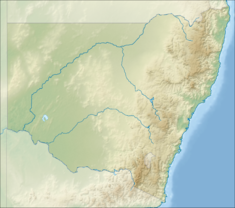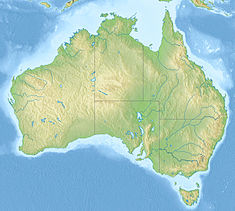
The Department of Lands building is a heritage-listed state government administrative building of the Victorian Renaissance Revival architectural style located in Bridge Street in the Sydney central business district of New South Wales, Australia. The large three-storey public building was designed by Colonial Architect James Barnet and built in different stages, with Walter Liberty Vernon and William Edmund Kemp designing various components of the building. The builder was John Young.

The Armidale Post Office is a heritage-listed post office located at 158 Beardy Street, Armidale, in the New England region of New South Wales, Australia. The post office building was designed by the NSW Colonial Architect's Office under the direction of James Barnet and, subsequently, Walter Liberty Vernon and built in 1880 by W. Seabrook and J. T. Brown, with additions completed in 1897. The property is owned by Australia Post. The property was added to the New South Wales State Heritage Register on 17 December 1999 and to the Australian Commonwealth Heritage List on 8 November 2011.

The Paddington Post Office is a heritage-listed post office located at 246 Oxford Street in Paddington, a suburb of Sydney, Australia. The post office is owned and operated by Australia Post. The building was also a former telephone exchange. It was designed by the New South Wales Colonial Architect's Office under James Barnet and later Walter Liberty Vernon, and was built by William Farley. The building was added to the Commonwealth Heritage List, the New South Wales State Heritage Register on 22 December 2000, and the Register of the National Estate.
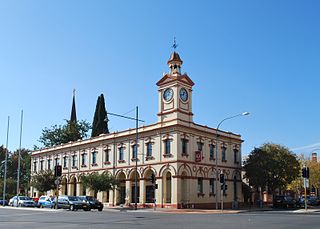
Albury Post Office is a heritage-listed post office at 570 Dean Street, Albury, in the Riverina region of New South Wales, Australia. It was designed by NSW Colonial Architects Office under James Barnet and built in 1880. The property is owned by Australia Post. It was added to the New South Wales State Heritage Register on 17 December 1999. On 8 November 2011 the building was listed on the Commonwealth Heritage List; and is listed on the Register of the National Estate since 21 March 1978.
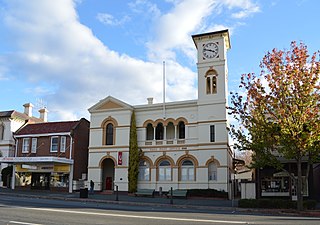
Yass Post Office is a heritage-listed post office and residence at 101 Comur Street, Yass, Yass Valley Shire, New South Wales, Australia. It was designed by the Colonial Architect's Office under James Barnet and built by W. Bundock. The property is owned by Australia Post. It was added to the New South Wales State Heritage Register on 22 December 2000.

The Commercial Bank of Australia Building is a heritage-listed former telegraph office and bank and now commercial premises at 164 Beardy Street, Armidale, in the New England region of New South Wales, Australia. It was designed by NSW Colonial Architect's Office and built from 1882 to 1885 by C.T. Cook. It is also known as Comfort Lodge. The property is owned by Joe Barbato Pty Ltd (Private). It was added to the New South Wales State Heritage Register on 2 April 1999.

Broken Hill Post Office is a heritage-listed post office at 258–260 Argent Street, Broken Hill, in the Far West of New South Wales, Australia. The original building was designed by James Barnet, and was built from 1890 to 1892 by John Dobbie. Walter Liberty Vernon designed a telegraph office addition in 1900. The property is owned by Australia Post. It was added to the New South Wales State Heritage Register on 22 December 2000. It was added to the Australian Commonwealth Heritage List on 8 November 2011.

Forbes Post Office is a heritage-listed post office at 118 Lachlan Street, Forbes, Forbes Shire, New South Wales, Australia. It was designed by the New South Wales Colonial Architect's Office under James Barnet and built from 1879 to 1881 by P. M. Vaughan. The property is owned by Australia Post. It was added to the New South Wales State Heritage Register on 22 December 2000. It was added to the Australian Commonwealth Heritage List on 22 June 2004.

Goulburn Post Office is a heritage-listed post office at 165 Auburn Street, Goulburn, New South Wales, Australia. It was designed by Colonial Architect James Barnet and built from 1880 to 1881 by F. Horn. It is also known as Goulburn Post and Telegraph Office. The property is owned by Australia Post.

Hay Post Office is a heritage-listed post office at 120 Lachlan Street, Hay, Hay Shire, New South Wales, Australia. It was designed by the Colonial Architect's Office under James Barnet, and built by E. Noble and Co. The property is owned by Australia Post. It was added to the New South Wales State Heritage Register on 22 December 2000.

The Tamworth Post Office is a State heritage-listed post office located on the corner of Fitzroy Street and Peel Street, Tamworth in the Tamworth Regional Council local government area of New South Wales, Australia. It was designed by the Colonial Architect's Office under James Barnet and built by W. C. Cains. The property is owned by Australia Post and was added to the New South Wales State Heritage Register on 22 December 2000.

Junee Post Office is a heritage-listed post office at 119 Lorne Street, Junee, Junee Shire, New South Wales, Australia. It was designed by Designed by the Colonial Architect's Office under James Barnet and built by Gatby and Flock. The property is owned by Australia Post. It was added to the New South Wales State Heritage Register on 22 December 2000.

Kempsey Post Office is a heritage-listed post office at Belgrave Street, Kempsey, Kempsey Shire, New South Wales, Australia. It was designed by the Colonial Architect's Office under James Barnet, and was built by Gabriel and McMorrine, with additions in 1903-04 built by Hocking Brothers. The property is owned by Australia Post. It was added to the New South Wales State Heritage Register on 22 December 2000.

Kiama Post Office is a heritage-listed post office at 24 Terralong Street, Kiama, Municipality of Kiama, New South Wales, Australia. It was designed by the Colonial Architect's Office under James Barnet. and built by W. R. Vaughan. The property is owned by Australia Post. It was added to the New South Wales State Heritage Register on 22 December 2000.

Mudgee Post Office is a heritage-listed post office at 80 Market Street, Mudgee, Mid-Western Regional Council, New South Wales, Australia. It was designed by Alexander Dawson and built in 1862, with 1902 additions designed by Walter Liberty Vernon. The property is owned by Australia Post. It was added to the New South Wales State Heritage Register on 17 December 1999.
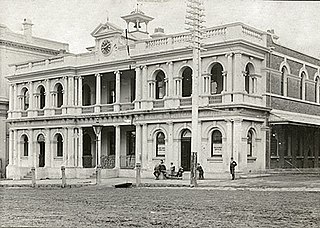
The Orange Post Office is a heritage-listed post office located at 221 Summer Street, Orange, City of Orange, New South Wales, Australia. It was designed by Designed by the Colonial Architect’s Office under James Barnet and built by J. Douglas. The property is owned by Australia Post. It was added to the New South Wales State Heritage Register on 22 December 2000.
Casino Post Office is a heritage-listed post office at 102 Barker Street, Casino, in the Northern Rivers region of New South Wales, Australia. It was designed by the NSW Colonial Architect's Office and built from 1879. The property is owned by Australia Post. It was added to the New South Wales State Heritage Register on 23 June 2000.

Maitland Post Office is a heritage-listed post office at 381 High Street, Maitland, City of Maitland, New South Wales, Australia. It was designed by the NSW Colonial Architect's Office under James Barnet and built in 1881. The property is owned by Australia Post. It was added to the New South Wales State Heritage Register on 17 December 1999.

Richmond Post Office is a heritage-listed former post office at 286 Windsor Street, Richmond, City of Hawkesbury, New South Wales, Australia. It was designed by Colonial Architect James Barnet and built from 1875 to 1888. The original building was built by a Mr. Johnson, with the second-story addition in 1888 added by Samuel Bought. It is also known as Richmond Telegraph and Post Office. It was added to the New South Wales State Heritage Register on 23 June 2000.

Redfern Post Office is a heritage-listed former residence and now post office located at 113 Redfern Street in the inner western Sydney suburb of Redfern in the City of Sydney local government area of New South Wales, Australia. It was designed by the Colonial Architect’s Office under James Barnet and built by Goddard and Pittman. The property is owned by Australia Post, an agency of the Australian Government. It was added to the New South Wales State Heritage Register on 22 December 2000.

